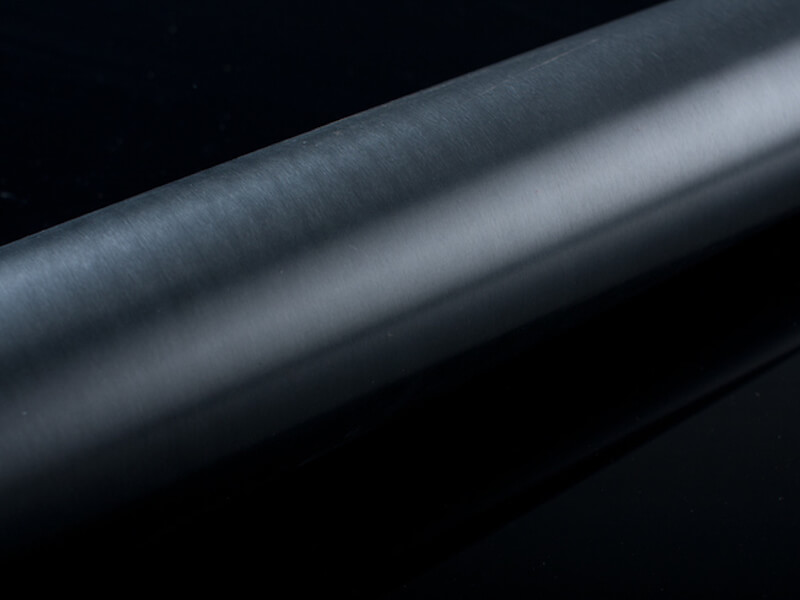White spots on black anodized finishes are a common industry problem. There are a variety of reasons why they might occur.
The fix — if there is one that you, as the anodizer, can implement — depends on the cause. To figure out the cause, a few questions can be asked and tests performed.
Can the white spot be wiped off, leaving what looks like an acceptable finish? If the answer is yes, then the spot is likely due to precipitated salts, probably from the seal. These spots occur at Imperfections in the coating, and the effect is exacerbated by small galvanic induced electrical currents. Coating imperfections are often due to unwanted inclusions in the aluminum, physical micro ridges (machined areas), or sharp edges on the part. To mitigate galvanic effects, make sure the load bar is electrically insulated from the tank wall. If possible, use an aluminum rack or, if it must be titanium, try to reduce the surface area of the rack relative to that of the parts on the rack. Sacrificial anodes (magnesium rods) can be hung from the work bar while the parts are being dyed and sealed. You might also try a post-anodize nitric acid rinse (10%), as this may help to passivate areas of imperfection while at the same time improving the color quality.
If the spot can’t be wiped off, what is its shape? A microscope or magnifying glass may be helpful to determine this more easily. Round spots are likely the result of either surface contamination or small popped blisters. You can identify blisters by determining if a coating is present at the spot. A quick test is to apply a drop of acidified copper solution (~1N HCl with ~10 g/l CuSO4) to the spot. If no coating is present, the spot will turn red within a few minutes. Blisters occasionally occur on heat-treated 7075 alloy and sometimes 6061. Blistering occurs during the anodize step, even though the spot may not show up until the part is dyed. Metal quality may be the problem here, but you should check to see that your rectifier is operating properly. The ripple should be near 5% or less. Some have suggested slowing your anodize ramp rate and reducing the current density. If your power supply gives you the option, switching to a pulse electrical program is recommended.
Residue Not Adequately Removed by Your Cleaner
If you have determined that the round spots are not blisters, they may be the result of residue that was not adequately removed by your cleaner. Surprisingly, some residues can survive the anodize step and inhibit dye from picking up. This may be a chronic problem with one customer’s parts. You might test a load by flash anodizing followed by flash etching, then anodize and process normally. If the load looks good, you might want to focus your attention on your cleaning operation.
Another source of surface residue may be small particles of mold in your anodize rinse that stick to the surface. This sometimes happens when anodizing additives are used. If this is the case, you should change out and thoroughly clean your rinse tank.
The third source for this type of white spot may be the presence of alkali particles floating around in the air, adhering to the anodized surface while a load is being transferred to the dye or electrolytic coloring tank. Such particles become airborne when a load is taken out of the etch tank or when blind holes are cleared of residual caustic using pressurized air. To avoid this problem, you may need to take a critical look at your ventilation and minimize the amount of time an anodized load is hanging in the air.
Unwanted Iron-Containing Inclusions
White spots that are not round are usually the result of entrapped anodize acid in tiny pits, cavities, or groves. Pits may be due to unwanted iron-containing inclusions in the metal that are etched out during the anodizing step. Cavities may be due to the porosity of cast aluminum, which includes Mic 6 jig plate. Tiny groves may occur on machined surfaces. Anodizing can open up surface or near-surface defects, leaving voids that can be very difficult to rinse clean. As a result, dye pick up will be inhibited in the area where any acid remains. Usually, the acid oozes out of the pit or cavity while in the dye tank, forming irregularly shaped spots, including comet tails. For this kind of white spot, the focus must be on the post anodize rinse. A 30-60 second rinse in 5-10% nitric acid, followed by a freshwater rinse, works as well as anything else I’ve tried to eliminate this problem.
There are many causes for white spots on color anodized parts. I hope that I’ve captured those that are most common and given you the tools to help you resolve your white spot problem.
Mark Jozefowicz is Vice President of Technical Services at Reliant Aluminum. Visit http://www.reliantaluminumproducts.com



































